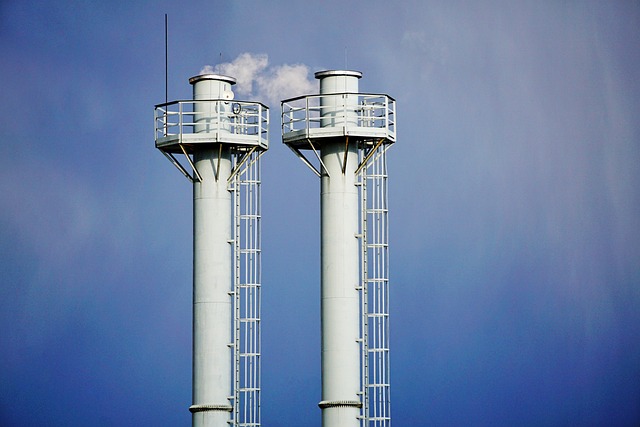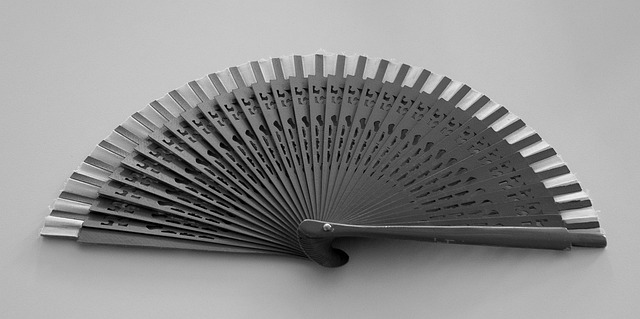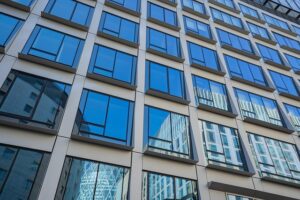Commercial air curtains are transforming energy efficiency and indoor comfort in business establishments by creating a seal around doors, preventing air exchange, and reducing energy consumption. Modular designs allow synchronized operation across multiple entrances in warehouses, retail stores, and industrial spaces, fostering better climate control and enhancing HVAC performance. These adaptable barriers prevent condensation, contain dust, and improve customer satisfaction by creating comfortable environments, making them invaluable for dynamic commercial settings. Case studies show significant HVAC efficiency improvements and cost savings in retail and logistics sectors.
“Revolutionize your commercial space with the power of modular air curtains—a game-changer in maintaining optimal indoor environments. This article explores the significance of commercial air curtains and how their advanced design offers unparalleled control over temperature and energy efficiency.
We delve into the challenges of traditional systems and highlight the need for a modular approach, especially in complex commercial settings with multiple entrances. Discover how synchronized door operations enhance user experience while reducing energy costs. Through case studies, we demonstrate the real-world impact of these innovative solutions.”
- Understanding Commercial Air Curtains: Their Role and Benefits
- The Need for Modular Design in Commercial Settings
- Advantages of Multi-Door Synchronized Operation
- How Modular Air Curtains Facilitate Efficient Operations
- Case Studies: Successful Implementations of Modular Commercial Air Curtains
Understanding Commercial Air Curtains: Their Role and Benefits

Commercial air curtains play a pivotal role in enhancing energy efficiency and indoor comfort for various business establishments. These innovative entrance air barriers create a seal around doors, preventing the exchange of cold or hot air between interior and exterior environments. By acting as door air curtains, they ensure climate separation, significantly improving HVAC (heating, ventilation, and air conditioning) efficiency.
In warehouses, retail stores, and other commercial spaces with multiple entrances, synchronized operation of these air curtains is now achievable through modular designs. This technology not only reduces energy consumption but also creates a more comfortable experience for customers and staff. Heated air curtains, for instance, can prevent condensation and frost build-up during colder months, while industrial air barriers can effectively contain dust and other contaminants at warehouse entrances.
The Need for Modular Design in Commercial Settings

In commercial settings, where foot traffic is high and operations are dynamic, a modular design for commercial air curtains becomes increasingly vital. Traditional fixed air barriers often fall short in catering to the diverse needs of various commercial entrances, from retail door systems to warehouse entrances. These static solutions can’t adapt to the ever-changing demands of different spaces, leading to inefficiencies and increased operational costs.
Modular commercial air curtains offer a flexible alternative, providing precise climate separation and energy-saving technology where needed. By enabling synchronized operation across multiple doors, these innovative entrance air barriers enhance HVAC efficiency, ensuring optimal indoor comfort while minimizing environmental impact. This adaptability is particularly beneficial for industrial air barriers, where maintaining specific conditions in different zones is essential.
Advantages of Multi-Door Synchronized Operation

In commercial settings, particularly those with multiple entries and exits, like retail stores, warehouses, and industrial facilities, implementing multi-door synchronized operation with modular commercial air curtains offers significant advantages. Firstly, it ensures uniform climate separation across all entrances, maintaining optimal indoor temperature and humidity levels—a critical factor for enhancing HVAC efficiency, especially in extreme weather conditions. This uniformity also contributes to better energy savings technology as the system operates cohesively, avoiding the need for individual adjustments.
Additionally, commercial air curtains help reduce the risk of drafty areas at entry points, which can lead to energy loss and discomfort for customers and employees alike. By maintaining a steady airflow and temperature across all doors, these entrance air barriers foster a more comfortable environment, enhancing customer satisfaction and retention. This feature is especially valuable in retail door systems where first impressions are crucial.
How Modular Air Curtains Facilitate Efficient Operations

Modular air curtains are transforming commercial spaces by offering a flexible and efficient solution for managing climate separation at various entrances. Unlike traditional fixed door systems, these innovative entrance air barriers are designed with versatility in mind, allowing for easy installation and customization to fit diverse retail door systems, warehouse entrances, and even industrial air barriers. Each modular unit functions as a door air curtain, creating a powerful barrier that prevents the loss of heated or cooled air, thereby enhancing HVAC efficiency.
This technology is particularly beneficial for commercial spaces with multiple doors that require synchronized operation. By enabling multi-door synchronized control, businesses can achieve significant energy savings while maintaining optimal indoor climate conditions. The customizable nature of these modular curtains allows for seamless integration into various environments, making them a smart choice for those seeking to optimize their commercial entrances and improve overall operational efficiency.
Case Studies: Successful Implementations of Modular Commercial Air Curtains

In recent years, modular commercial air curtains have gained significant traction across various industries. Case studies highlight successful implementations in retail stores, warehouses, and industrial facilities, showcasing their ability to enhance energy efficiency and climate separation at commercial entrances. For example, a leading retail chain deployed heated air curtains at multiple doors, achieving notable HVAC efficiency gains while ensuring a comfortable shopping environment for customers.
Another compelling case involves a major logistics hub where door air curtains were integrated into the warehouse entrance system. This implementation resulted in reduced energy consumption and improved indoor air quality, demonstrating the technology’s effectiveness as an entrance air barrier. These real-world applications underscore the versatility of modular air curtains, offering not only climate separation but also substantial energy saving technology benefits for commercial spaces across diverse sectors.
Modular commercial air curtains, with their innovative design and multi-door synchronization capabilities, offer businesses an efficient and effective solution for maintaining optimal indoor environments. By embracing this technology, commercial spaces can significantly enhance energy efficiency, improve comfort, and create a seamless user experience. The flexibility of modular systems ensures adaptable installations tailored to various layouts, while synchronized operations across multiple doors streamline workflow and reduce energy wastage. As the demand for smarter, more sustainable buildings grows, these air curtains stand out as a game-changer in the field of commercial HVAC solutions, contributing to both comfort and sustainability goals.






